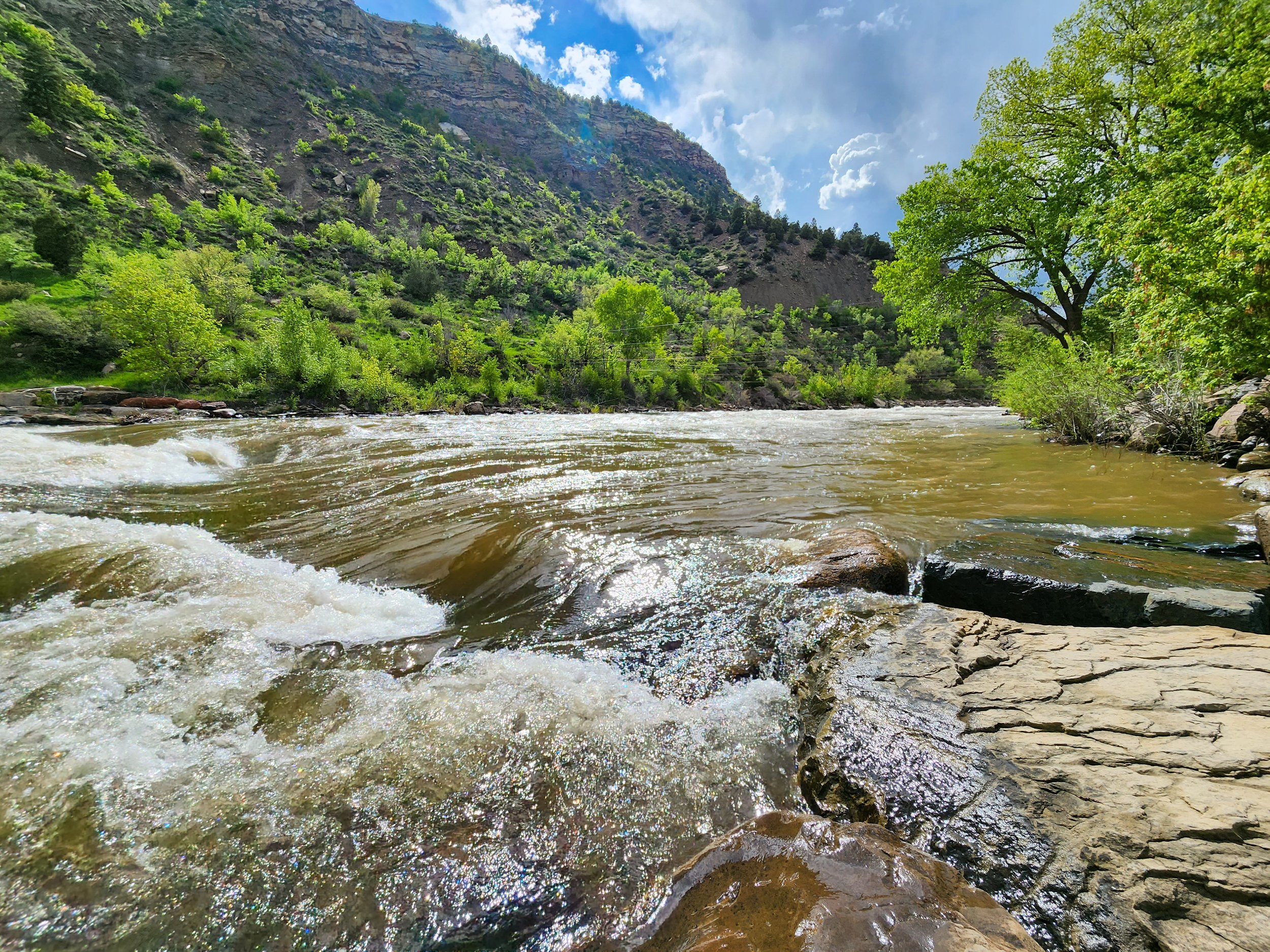Did this year’s record-breaking snowpack officially end the megadrought? (Spoiler alert: it did not.) What solutions exist to face the challenges of western water management?
Animas River in Durango, Colorado flowing in May 2023
A Record-breaking Winter in Western US
It’s no secret that winter 2022/2023 was exceptionally snowy, and - quite literally - record-breaking in the western US. Throughout the winter we read news headlines that quickly progressed from “epic snow year” to “potentially record-shattering” and finally to “largest-ever snowpack”. These bold headlines in the media were validated by the US National Resource Conservation Service’s (NRCS) SNOTEL network, which revealed that snow water equivalent (SWE) values sky-rocketed well above normal in nearly all western US basins. This positive outlook continues through late spring for southern states in the west — the snapshot from late May shows an above-normal snowpack for many basins in Oregon, Nevada, Utah, and Colorado.
Western US Snow Water Equivalent values are above normal for southern states in the West and below normal for northern states.
Digging Out From a Big Hole
This prodigious snowpack couldn’t have come at a more desperate time. Last summer, drought conditions across the western US reached all-time severity with numerous regions reaching D3 (Extreme) and D4 (Exceptional) drought stages. Many states experienced major losses to crops and pastures, and numerous water shortages and restrictions were put into place. With winter 2023 in the rear view mirror and summer just ahead, it’s difficult to imagine that, in just a few months’ time, much of the western US will return to a dry, drought-stricken landscape, but unfortunately, that’s the reality we face. Even a record-breaking snowpack cannot make up for numerous years of back-to-back drought conditions.
The tension created between the ongoing drought and this year’s snowfall demonstrates the challenges of western water management and how one good snow year can create an illusion of water security.
The Endless Winter Fights Back
While this extraordinary winter won’t completely erase the megadrought, the short-term drought outlook has improved significantly. A drought summary posted by the National Drought Mitigation Center on May 23, 2023 shows a dramatic improvement for most of the western US over the last year, with most area’s drought classifications downgraded by one or more classes.
Changes in drought classifications across the US.
But as welcome as this improvement is, it’s going to take more than one good snow year to dig ourselves out from the deep hole we are in. Much of the US is still categorized as either D0 (Abnormally Dry) or D1 (Moderate Drought) with some select regions continuing to worsen, even after this winter. The following two images show recorded drought conditions almost exactly one year apart.
Drought conditions comparing May 2022 to May 2023.
The New and Fragile Normal for Water Supply
Water managers rely on forecasts to predict the volume of available water supply for the upcoming spring and summer months. Generally, a bigger snow year means a better forecast and more water availability. But total snowfall is only one piece of the water supply puzzle, and other factors, mainly brought about by a more volatile climate and our changing society, can create additional challenges.
Some of the challenges today’s water managers face include:
Higher overall demand for water and more consumptive uses brought about by population growth.
Difficulty with the management of the timing of runoff (earlier melting) – warmer-than-average spring temps and more dust-on-snow events (which expedites melting) are causing severe flooding and other adverse impacts. Overall, severe runoff is less beneficial for water supplies as it overwhelms water storage infrastructure and is difficult to capture (something stormwater experts are grappling with as they look to design infrastructure for a changing climate).
Thirsty soils – already dry soils take up less water than saturated soils, leading to more runoff and less water supply capture.
Previously depleted groundwater resources and surface water reservoirs – “digging out of a hole”.
Water Managers Look to Variety of Strategies to Harness Retimed and Excess Water
These challenges, combined with a volatile climate, mean that one wet winter won’t be enough, and leave water managers facing a difficult task.
Fortunately, solutions such as water banking, watershed planning, and aquifer storage and recovery (ASR), can be deployed to combat these challenges and capitalize on the periods of excess runoff water. And thanks to the unprecedented volume of available funding opportunities for water sustainability, conservation, and efficiency projects, these solutions are becoming more widespread and are proving to have effective implementation.
Aspect is heavily involved in water banking, watershed planning, and ASR, helping western clients with short-term and long-term water supply projects. Additional detail about Aspect’s past and current involvement with these strategies can be found below:
















